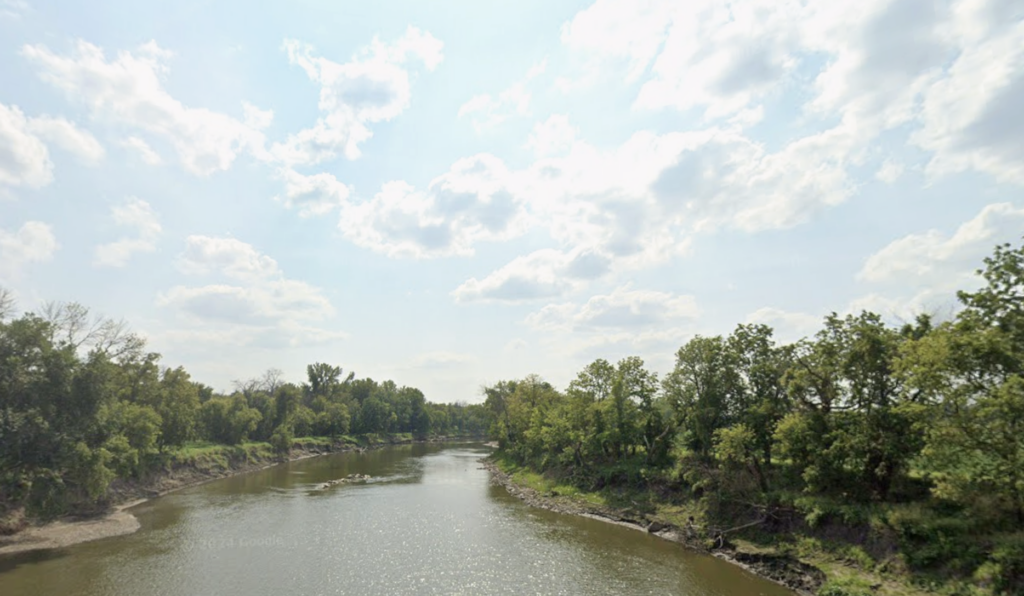
The Little Sioux River flows through Cherokee and eventually into the Missouri River. (Photo by Google Maps)
The Iowa Department of Natural Resources has approved a request from the City of Cherokee to discharge up to 2 million gallons of partially treated wastewater, daily, into the Little Sioux River from the city’s wastewater treatment plant.
The City of Cherokee wastewater treatment plant has been inoperable since June 2024 when floodwaters caused “significant damage,” according to a press release from the DNR.
Since then, the city’s wastewater has been stored in equalization lagoons which were at risk of overflowing.
Tammie Krausman, a DNR spokesperson, said the department approved the temporary discharge plan to “protect the remaining treatment infrastructure.”
“If the lagoons overtop, it may cause structural damage, which would leave the city without any treatment options,” Krausman said in an email.
The temporary discharge plan allows for up to 2 million gallons of wastewater discharge per day for 25 days, or until the lagoon levels are “lowered to a safe level.”
Krausman called it a “very rare occurrence.”
“In most situations the DNR can work with the facility to find an alternate resolution,” Krausman said. “This situation is different as there are no other alternatives.”
The wastewater discharge began Nov. 15, according to the press release, and the department is not cautioning downstream activity.

“The city is aware that at no time should the discharge create a water quality violation or acutely toxic condition in the receiving water body,” Krausman said.
The facility has been operating as a lagoon system, a small system process of treating the wastewater, to avoid the safety concerns of operating the electrical systems in the damaged treatment plant. The lagoon system partially treats the wastewater and the temporary discharge permit allows the facility to continue receiving the city’s wastewater.
“The only other alternative is directly discharging raw wastewater to the receiving stream,” Krausman said.
The City of Cherokee hired Tom Grafft, an engineer with the multistate firm ISG, for updates to the wastewater treatment plant. Grafft said he would not typically recommend a lagoon system for an area the size of Cherokee. But when the June flood disabled much of the plant, the on-site lagoons — typically reserved for overflow during heavy rain events — presented an opportunity to collect the city’s wastewater.
“Lagoons can do treatment, but lagoons are more subject to Mother Nature’s influence, comparative to some of the other treatment options out there that utilize mechanical enhancements that can help control the biological environment in which the wastewater is being treated,” Grafft said.
The DNR will evaluate water sample results collected by the city during twice-weekly monitoring, and Grafft said if levels in the water begin to degrade, the facility will work with the DNR to create a path forward.
In the meantime, Grafft said he and the city are working with the DNR to implement additional treatment strategies and “improve that level of treatment” in the existing lagoons, while the city decides to either renovate the existing wastewater treatment facility, or build a new facility that is out of the floodplain.
YOU MAKE OUR WORK POSSIBLE.

